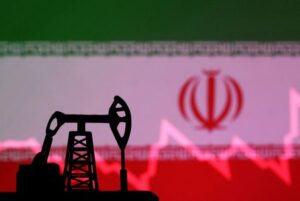BEIJING (Reuters) -China’s central bank said on Friday it will ensure reasonably ample liquidity and credit expansion to consolidate the country’s economic recovery, which still faces many challenges.
The People’s Bank of China (PBOC) said it will make its monetary policy flexible, precise and effective and promote a moderate recovery in consumer prices, writing in its quarterly monetary policy implementation report.
“We will maintain the stability of monetary policy, enhance the consistency of macroeconomic policy orientation, strengthen counter-cyclical and cross-cyclical adjustments, increase support for the real economy, and effectively consolidate and enhance the positive trend of economic recovery,” it said.
“The global economic recovery momentum is divided, and uncertainties such as monetary policy adjustments and geopolitical conflicts in developed economies still exist. The sustained recovery of the domestic economy still faces many challenges.”
China’s economy grew 5.3% in the first quarter, faster than expected. But key March indicators showed that demand at home remains frail, weighing on overall momentum
China has set an economic growth target for 2024 of around 5%, which many analysts say will be a challenge to achieve as a sagging property market and tepid consumer demand weigh on the economy.
The Communist Party’s top decision-making body last month pledged to step up support for the economy with prudent monetary policy and proactive fiscal policies, including through interest rates and bank reserve requirement ratios.
The PBOC has in recent weeks delivered modest cuts in banks’ reserve requirement ratio (RRR) and interest rates as part of broad measures to support the economy, with more policy easing expected in the coming months.
China will handle the relationship between its credit and bond markets carefully and guide the growth and balanced allocation of credit given that credit growth could slow down as the country pursues higher quality growth, the central bank said.
Bank loans to sectors such as infrastructure, real estate and manufacturing account for about half of China’s total loans, at nearly 250 trillion yuan ($34.6 trillion), while consumer loans make up for less than 10%, the central bank said.
“The supply side and investment sector of the real economy have relatively more financing, while the demand side, especially consumption, still has significant growth potential,” it said.
The PBOC faces a dilemma as more credit is flowing to manufacturing than into consumption, which could add to deflationary pressures and reduce the effectiveness of its monetary policy tools, analysts say.
The bank said China will improve the efficiency of its financial resources, reduce the amount of “idle funds” in the banking system, and develop direct financing for companies, which includes share sales.
“This may slow down the growth rate of total credit, but efficient enterprises that truly need funds will instead obtain more financing, thereby improving the efficiency of fund utilisation and the quality of financial support,” it added.
The central bank will keep the yuan basically stable to prevent the risk of the exchange rate overshooting, it said.
China’s yuan weakened slightly on Friday as reports of fresh trade restrictions from Washington weighed on the currency, although trading ranges were modest ahead of key U.S. inflation data due next week.
China’s low consumer prices are due to a lack of demand, the PBOC said, adding that it expected a mild increase in consumer prices by the end of the year and a narrower contraction in producer prices.
($1 = 7.2255 Chinese yuan renminbi)
(Reporting by Ella Cao, Ethan Wang and Kevin Yao; editing by Mark Heinrich and Hugh Lawson)





